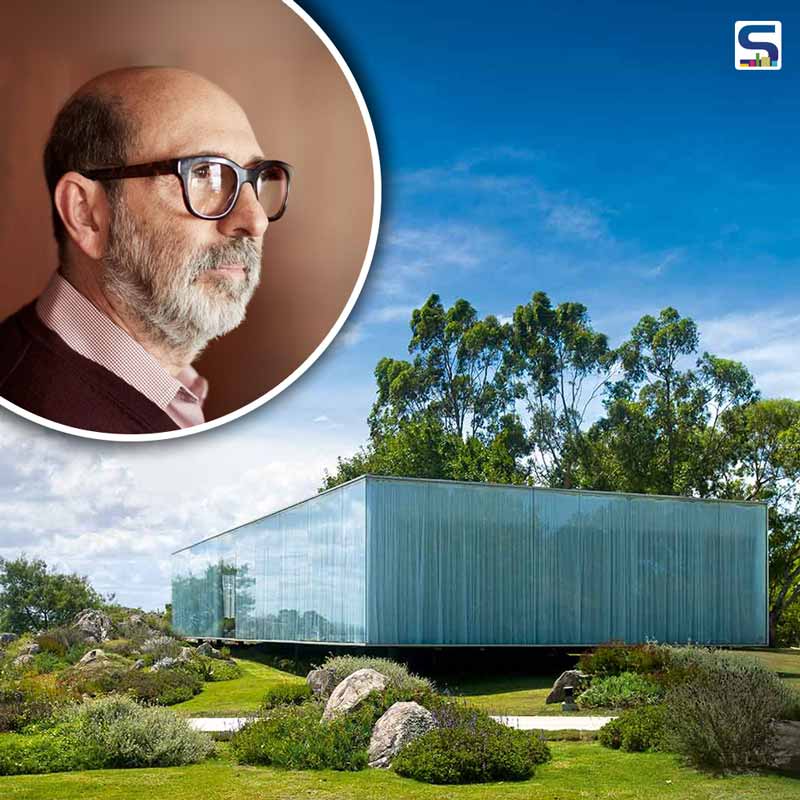
SURFACES REPORTER (SR) had an engaging interaction with the Brazilian born architect- Isay Weinfeld about his architectural journey, turning point in his career, his new book combining his three passions- film, architecture and music, and lots more.
Also Read: WATCH LIVE: SURFACES REPORTER E-TALKS 5th & 6th OCT 2020 with 3 Legendary Architects on World Architecture Day & Le Corbusier Day | Shivdatt Sharma, Isay Weinfeld, Thomas Vonier
Good architecture always reflects a point of departure. On one hand, it involves looking back at the past for inspiration while on the other hand, it involves looking forward in time – in a bid to keep a structure functional and relevant in the future.So, to witness a great work of architecture is to time-travel to the futurewith a looking glass that holds the past.
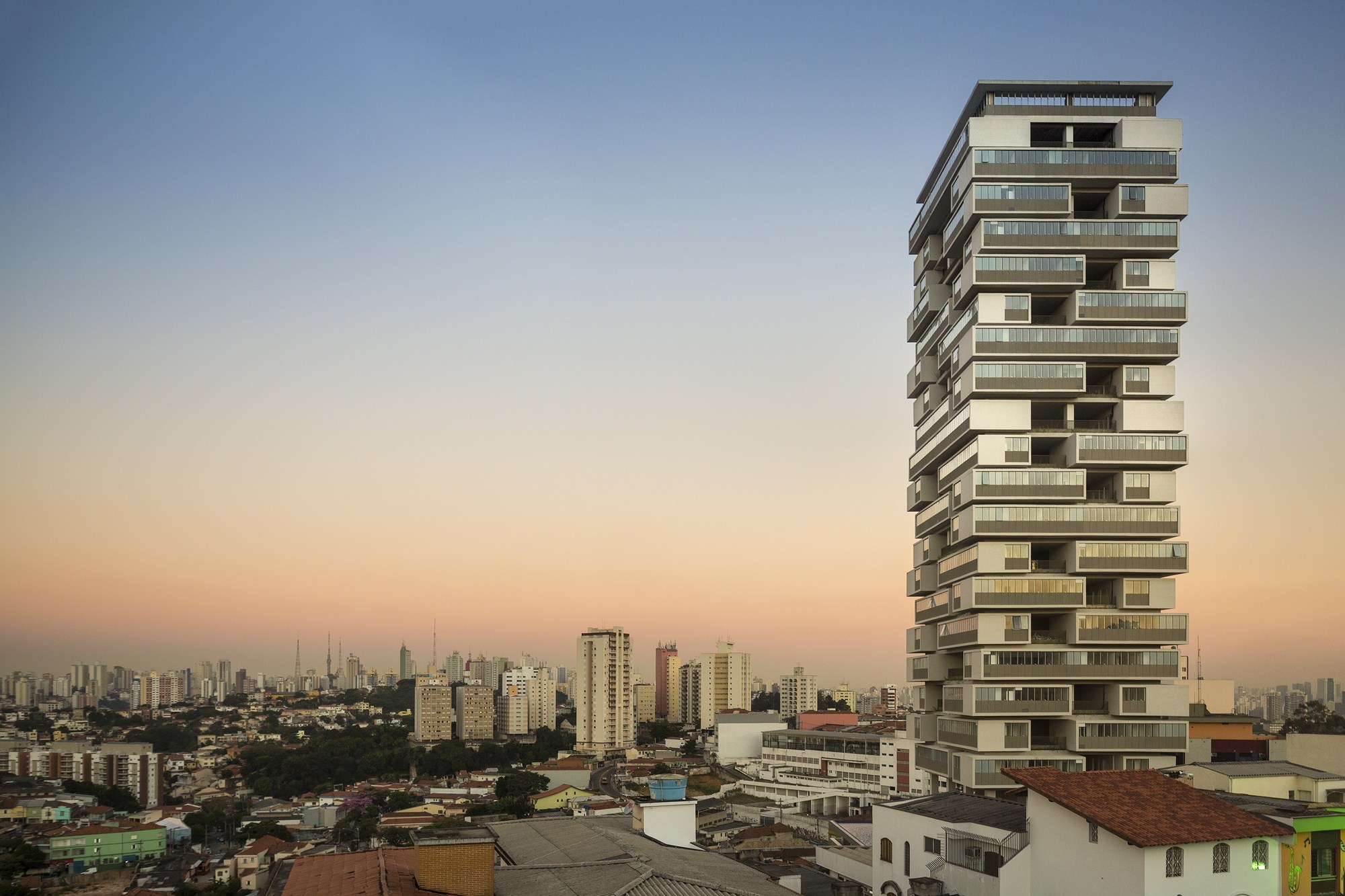 360º Building in Sa~o Paulo
360º Building in Sa~o Paulo
Like architecture is a potpourri that celebrates the passage of time and its arrival, it is also the perfect amalgamation of art and science. It is the science that celebrates the beauty of art – and in this process, has given birth to a number of great artists in the profession.
These architects have been responsible for advancing humanity while often not realizing it and with the arrival of modernism, they have emphasized functionality with design, innovation with imagination and ornamentation with style.
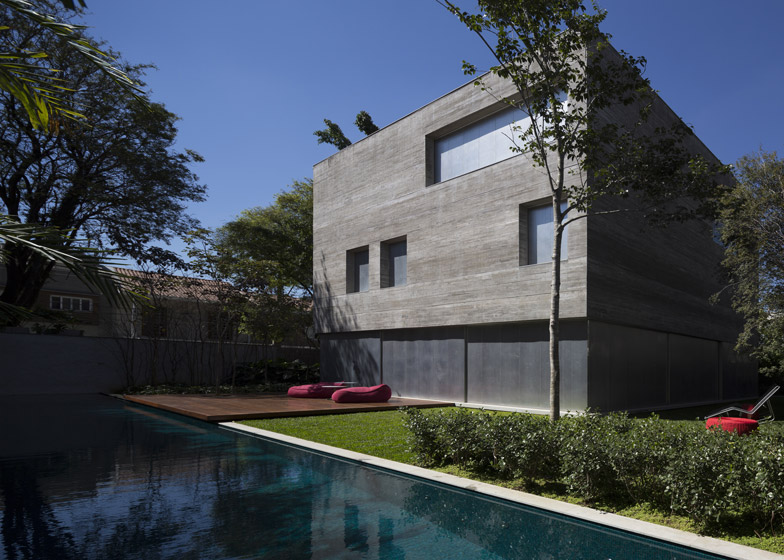 Casa Cubo, Sa~o Paulo
Casa Cubo, Sa~o Paulo
Modernism still continues to dominate architectural discourse and one such global icon in the field of architecture inspired by modernism is Isay Weinfeld. With his timeless modern sensibility, he has an eye for detail that’s unprecedented and a vision for the future that’s pioneering. Here’s an excerpt from an engaging conversation we had with the Brazilian born architect:
Tell us about your journey as an architect in your early days?
I should start off by saying I’m a very curious man, and I started exhibiting conceptual pieces of work alongside creating short films even before I was enrolled in the university. During my time at the university where I was studying architecture, I continued pursuing both of my passions as they interested me greatly.
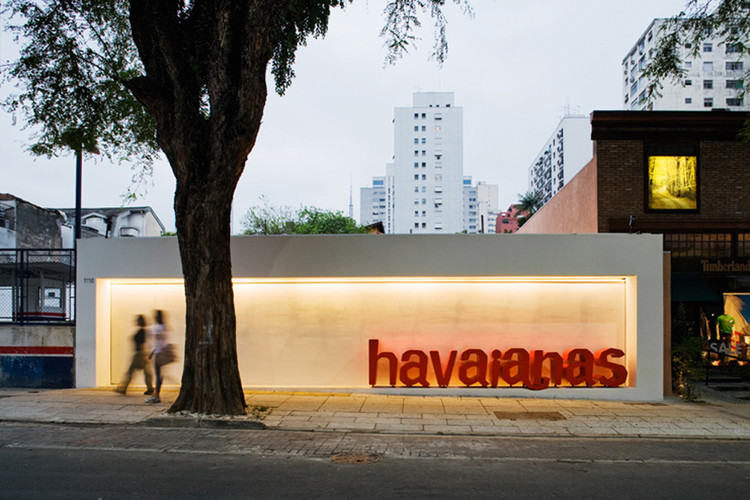 Havaianas shop, Sa~o Paulo, Brazil
Havaianas shop, Sa~o Paulo, Brazil
When I was in my third year, my uncle called upon on me to design the apartment he had just bought. This was my first opportunity in architecture– and I used it
well to demolish the entire building, and create an extremely modern and contemporary living space for the 1970s.
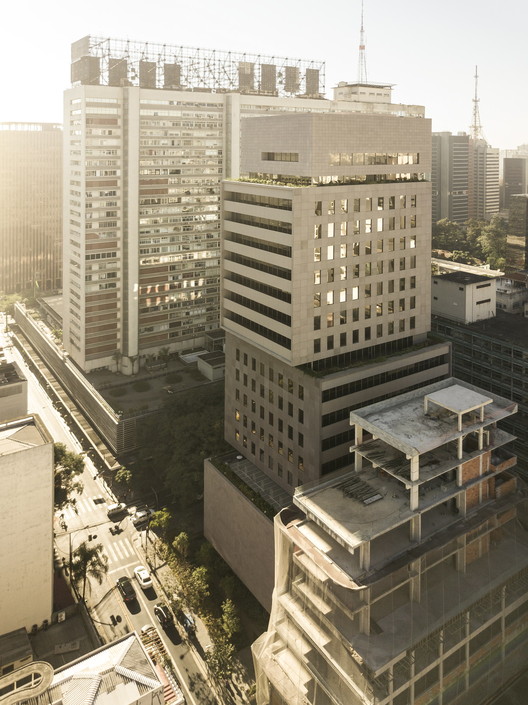 Santos Augusta Building
Santos Augusta Building
The apartment had an eclectic black and white design that was beautiful – but it was completely wrong. It was a disaster! My first project has been my greatest lesson in architecture. On that day, I learnt I should design keeping the best interests of my client, and not myself. This disaster was essential in my life to teach me that my ego should be invisible – my work should benefit the other, and was not a mere show-off of my skills.
You have developed a signature style that combines elegance, minimalism and modernism. What is a design philosophy you swear by?
Though I may have a philosophy, I hate to be labelled or profiled in regards to one style or genre. However, one of the guiding principles of my work is to respect the client and I’m a very good listener and that reflects in my architectural designs.
I’m also 95 percent more of a psychoanalyst than an architect, so I listen intently to what my clients have to say. At all times of the day, I’ve a lot of parallel thoughts running which help me to envision the project and imagine it in my mind as the client speaks his needs and design preferences.
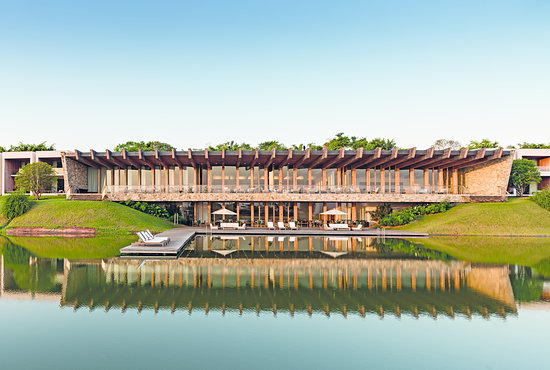 Hotel Fasano Boa Vista, Porto Feliz
Hotel Fasano Boa Vista, Porto Feliz
What are your thoughts on the popular practice of having star architects?
It is an idea that rarely makes sense to me, for what’s famous is not synonymous to what’s good. In my opinion, most of the star architects are not good architects.
Brasilia and Chandigarh are two modernist capitalist designed by two distinct modernist masters. 65 years later, do you think that has been a turning point in the architectural history of the two countries?
Of course. It was a very important point in Brazilian architecture. The contributions of Oscar Niemeyer and Le Corbusier have been phenomenal. Though they weren’t exactly contemporaries, they were both geniuses.
 La Petite Afrique Building, Monaco
La Petite Afrique Building, Monaco
However, though I agree they were powerhouses of talent, their stardom eclipsed many generations of artists. The reasons were sometimes political. I might go as far to say I was more influenced by Ingmar Bergman, the film director than Neymar for I believe art is all encompassing, symbiotic and must be inter-connected with all streams like film, music and theatre. For me, architecture is storytelling.
Also Read: Marrying the Earth to the Building: A film on Didi Contractor at WADe Asia event
Having a flare of individualism and following one’s path is important – regardless of victory. It is the streak of individual thought that makes revolutionary art and architecture possible.
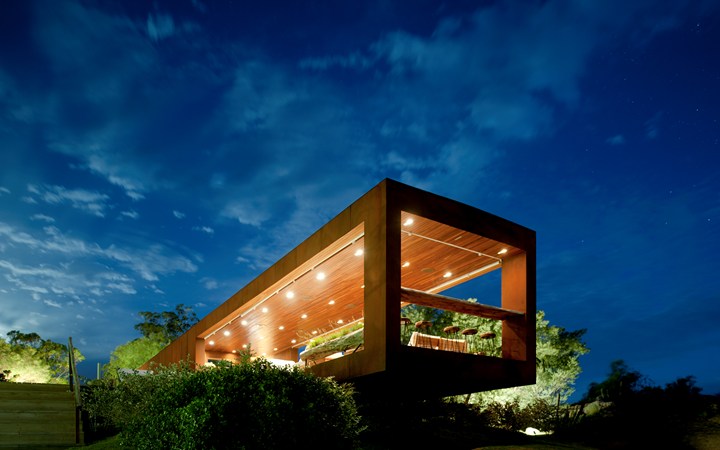 Hotel Fasano Las Piedras, Punta del Este, Uruguay
Hotel Fasano Las Piedras, Punta del Este, Uruguay
What are some of your guiding principles?
I’m very careful to take up projects, and once I do, I give it my all. I work as an art director. I emphasize interiors, lighting, landscape as well as the graphic design of the building. My way of thinking encourages me to approach architecture as a holistic process rather a separated one.
What I love is what I’m doing now: the project on low-income housing spaces. The biggest pleasure I derive from being an architect is how it brings me in touch with a wide mixture of people who are usually living on extremes.
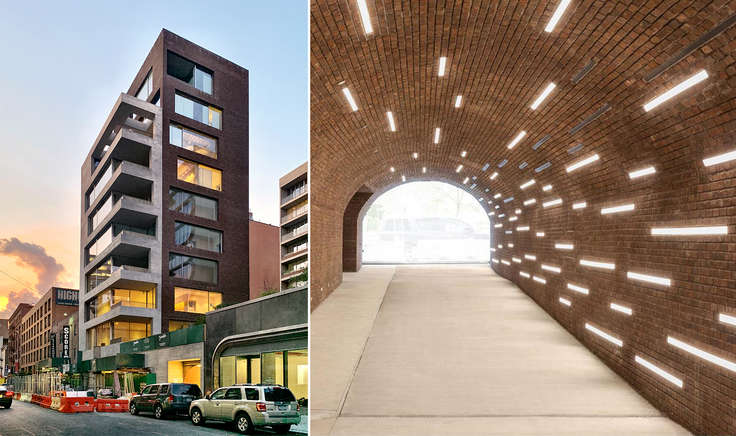 Jardim High Line in the heart of West Chelsea
Jardim High Line in the heart of West Chelsea
Whereas it lets me work on high-line luxury buildings, I also get the chance to provide sustainable homes for the homeless people and architecture is about this fusion of the extremes.
How do you think technology has reformed the learning principles for architecture, and especially as we stay confined to our homes?
It goes without saying that technology has made information easily accessible. Everything is at our fingertips – and we’re all connected.
However, the virtual can never replace the real – not being at the office with my team brainstorming ideas, and only doing it over the screen is difficult.
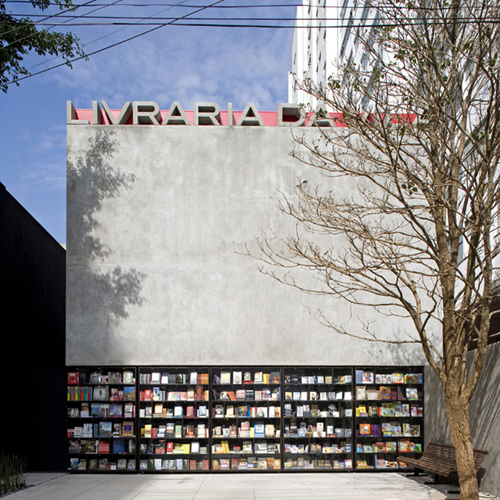 Livraria de Vila, Sa~o Paulo
Livraria de Vila, Sa~o Paulo
We’re fast adapting, and technology is the way to go for enhancing innovation. After the pandemic has passed us by, we would remain the same people – for better or for worse.
Tell us what you would advise young architects
Try to be a good architect – and not just an architect. Engage in other arts, listen more than you talk as architects, we’re here to serve people. Follow your own path – and chart your own journey.
Also Read: WATCH! Hiren Patel | Architect of the Week | Frankly Speaking with SURFACES REPORTER | 28 Nov l Sat l 7 PM l SR FB & Youtube
In my opinion when you confine yourself to a label and find a signature style, it is the first step you’re taking to decadence. Always remember to turn the page. Make mistakes, but keep experimenting. The only way you can continue to surprise people with your designs is if you continue to surprise yourself.
Here’s a brief insight on the panel discussion that ensued:
What are your thoughts on the state of architecture in a post-modern age?
AR. N. Mahesh: Architecture is becoming heavily reliant on technology as these days. No one these days build with the best interests of the environment in mind – technology equips you to create artificial environment inside your living space. Urban living space suffers from the constraints of confinement. Architectures are constantly looking forward to better technology as it makes the job easier.
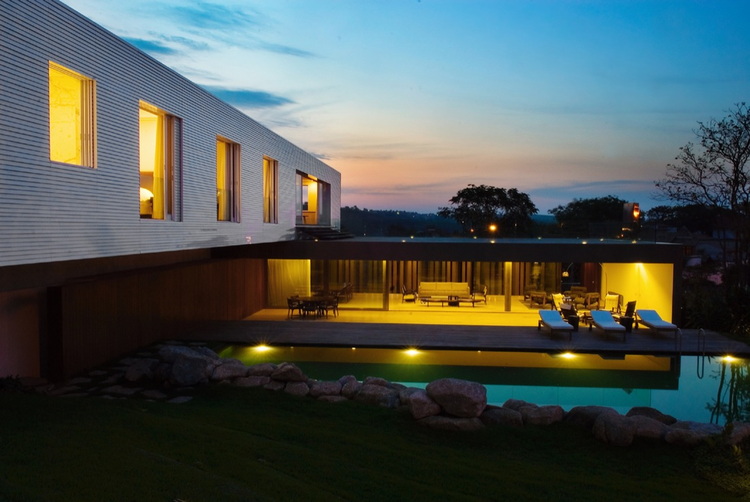 House in Piracicaba
House in Piracicaba
AR. Nishant Gupta: The keepers of architecture keep talking about the romance of art museums but forgets to mention residential projects that are basic to our existence and survival. We often overlook the need to create sustainable living spaces, and the need on mass-housing needs to overshadow the talk on fancy museums.
The state of global architecture, or Indian architecture, is very confused in terms of forms but awareness is fast increasing because of social media. The state of global architecture is often getting mired with local architecture. Global architecture ends up eclipsing the local flavors. Another misconception that goes around is low-income housing does not mean low amenity housing. Low-income housing involves proper utilization of space and resources available.
What are the key considerations needed to plan and develop cities today in the face of rapid change and uncertainty?
AR. N. Mahesh: It is difficult to answer this question on a global level – as each city is different from the other in terms of social, socio-economic, demographic and environment needs. One size does not fit all. However, the finest cities of the world should look inward and must focus on addressing its local needs and creating living spaces for all. Low-income housing should rather be called cost-effective housing.
AR. Nishant Gupta: Cities are not made by designers – they are made by people and policy makers. To achieve a fine city, it is the policy-makers of urban cities that need to be informed as we can witness the repercussions or success of a legislation only ten years after it has been implemented.
Personally, I like the vibrancy of the Dubai, the commotion of Mumbai, the innovation of Singapore and the elegance of Barcelona. I’m from the Instagram
generation – where I skim through covers. All the cities of future need a happy blend of experience and experimentation.
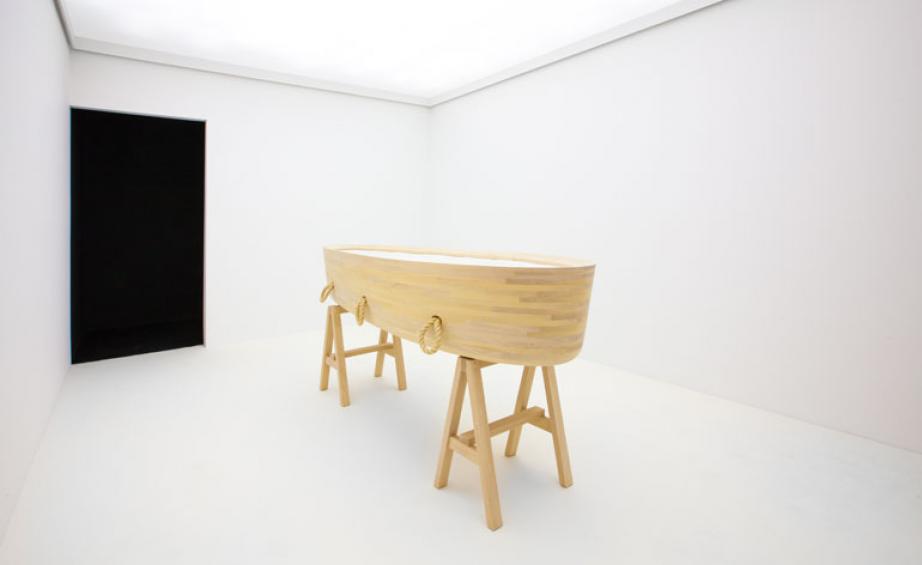 Coffin at Espasso Gallery, New York
Coffin at Espasso Gallery, New York
Habeeb Khan’s reflections
We’re going through exceptional times – the pandemic has not broken the world but it has revealed to us a world that was already broken. In the maddening quest for development, and the rush for material possessions – we’ve all been given a chance to stop and look within ourselves. Self-introspection is important to determine where we want to go from here, as humanity. Architects are responsible for the carbon-footprint we lay behind and the sacrilege that has happened. We as architects have failed to build sensibly and sensitively. The pandemic is a god given opportunity to us to step aside and evaluate our actions. When we build, we must prioritize innovation and meaningfulness in designing – and combining sustainable living with style.
Also Read: 10 Pandemic driven design trends that are likely to stay | SURFACES REPORTER Exclusive
A live question from the audience for Isay Wienfeld: Your experience of film making.
My three passions are film, architecture and music – mixing is my new found passion. My new book is on the way which discusses how the art of film making is similar to the art of architecture. To try and to open your mind and let it fly in many directions is the aim of a filmmaker as well as an architect!
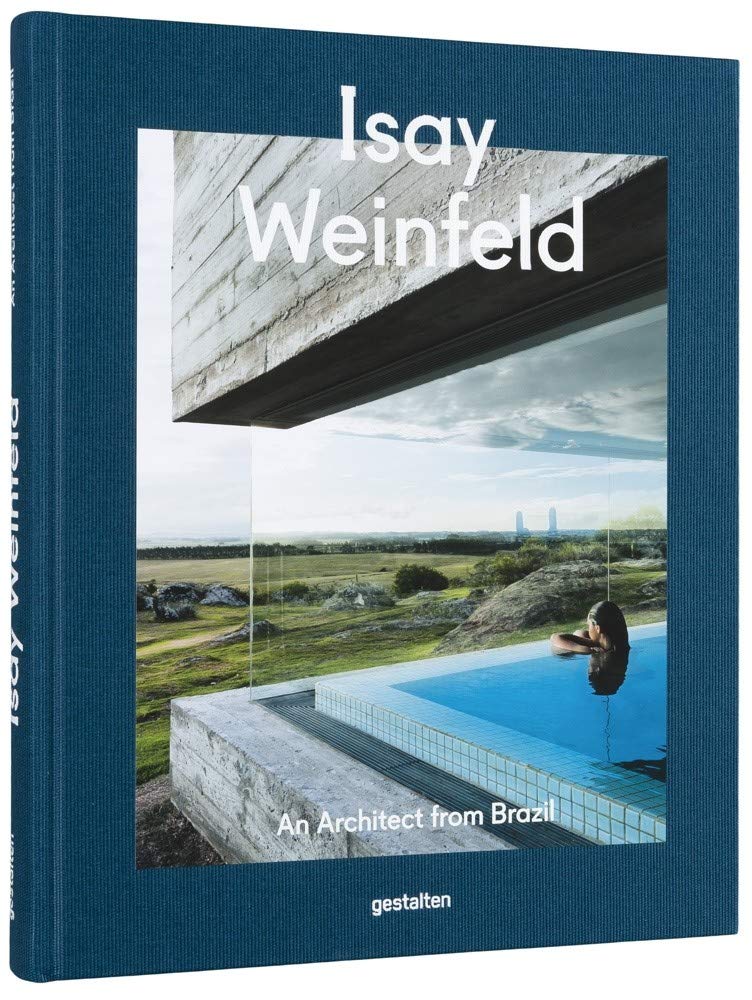
Isay Weinfeld Book
Parting words from the Ambassador André Aranha Corrêa do Lago
I believe Brazil and India can work very closely in the future to develop cities as we continue to confront the same challenges of urbanization. We can learn from each other and even a small intervention in one city can prove to be a very positive development in both countries.
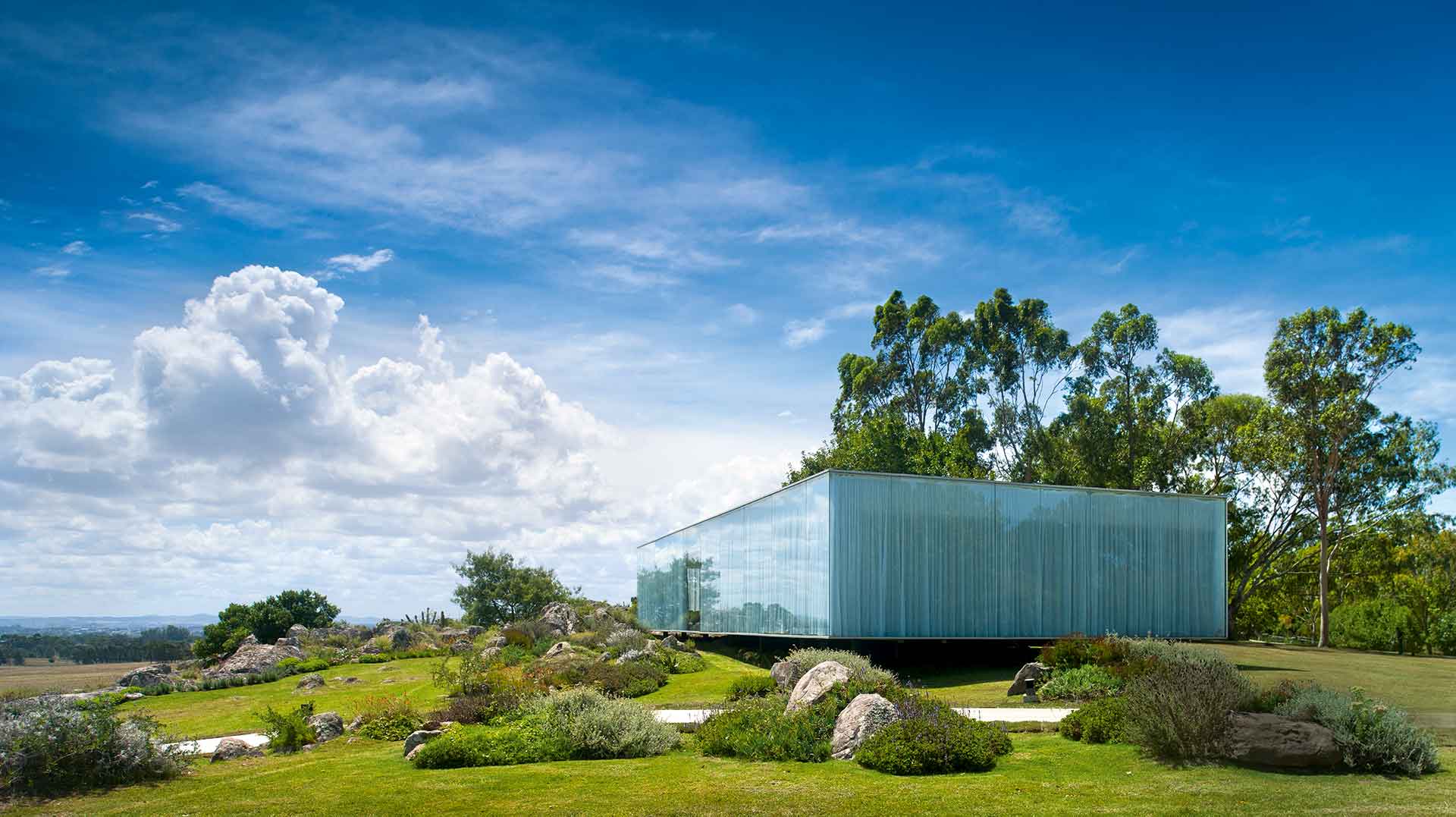 Fasano Las Piedras Hotel
Fasano Las Piedras Hotel
This beautiful conversation left us spellbound about architectural status of our country and the relationship between India and other brilliant countries out there.
The future of architecture is definitely going to shine bright like a diamond all of us are going to be there to witness this amazing transition. Are you excited? We are!
Keep reading SURFACES REPORTER for more such articles and stories.
Join us in SOCIAL MEDIA to stay updated
SR FACEBOOK | SR LINKEDIN | SR INSTAGRAM | SR YOUTUBE | SR TWITTER
Further, Subscribe to our magazine | Sign Up for the FREE Surfaces Reporter Magazine Newsletter
You may also like to read about:
Architectural Inspirations: The Work of Laurie Baker
Remembering Ar Charles Correa- Considered India’s Greatest Architect
and more...